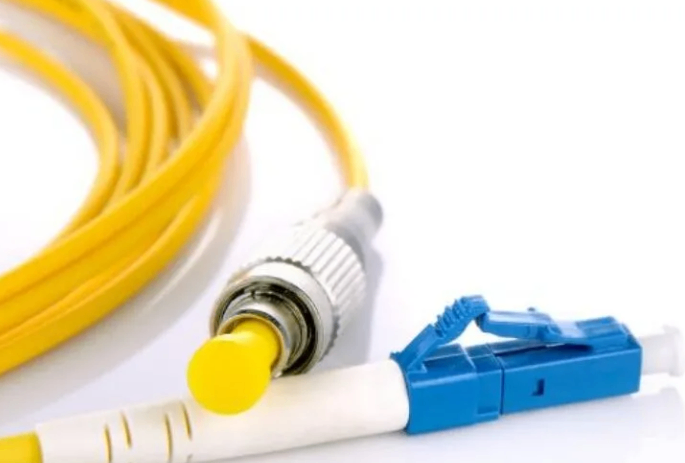Oufu Keber Optical, Ltd
Chomlec'h : Shenyang, Liaoning, China.
Darempred : Merour ZhangName
Pellgomz : 400-964-1314
Pellgomz hezoug : 86 13904053308
?
2025-09-22 1415

Step 2: Carefully Unpack and Inspect the Connector
MPO connectors are precision devices. Inspect the ferrule end-face for dust or damage using a specialized MPO inspection microscope. Never touch the ferrule or remove the protective dust cap until ready to connect.www.adsscable.cn
Step 3: Route the Cable and Manage Bend Radius
Gently route the cable to its destination. Constantly maintain the minimum bend radius (typically around 20x the cable diameter). Use wide-radius guides in trays to avoid sharp turns.
Step 4: Connect and Secure the MPO Connector
Align the connector key to the adapter's keyway (note polarity: key up or key down) and push firmly until it clicks into place. A gentle tug confirms it's secure. Avoid bending the cable immediately at the connector boot.
Step 5: Test and Verify the Link
Use an MPO-compatible optical loss test set (OLTS) or an MPO fan-out kit with a standard power meter to test the insertion loss of each fiber path. Ensure all values are within the acceptable budget.
⚠ Attention: The most common and costly mistake is contamination. A single speck of dust on an MPO ferrule can disrupt multiple channels. Always inspect and clean every MPO connector before mating, using approved tools and techniques.
The MPO indoor fiber cable is ubiquitous in data centers for spine-leaf architecture connections, in telecom central offices, and for any high-bandwidth link between equipment rows.
In a 2024 hyper-converged infrastructure deployment for a financial client, our team used 144-fiber MPO indoor fiber cable trunks to connect top-of-rack switches to the core. This pre-terminated solution allowed us to deploy the entire cabling plant for a 40-rack pod in just two days, a task that would have taken weeks with field termination. The first-test pass rate was 99.8%, highlighting the reliability of factory-terminated systems.
Beyond contamination, a major error is ignoring polarity. MPO systems use Type A, B, or C polarity methods to ensure a transmit port connects to a receive port across the entire link. Using the wrong method or mixing components will result in a non-functioning link.
反直觉的是, the sheer robustness of the cable can be a pitfall. Installers might treat it like armored cable, but the MPO connector itself is the fragile point. Always handle the connector with care and never use it as a pull-handle.
www.adsscable.cn
Before deploying your MPO system, run through this list:
Confirmed the cable jacket rating (Plenum/CMP or Riser/CMR) for your building code.
Verified the MPO fiber count (e.g., 12, 24) matches your hardware requirements.
Acquired an MPO inspection microscope and cleaning tools.
Planned and documented the polarity scheme (TIA-568 standard Method B is common).
Ensured pathway bend radius compliance and ordered the correct pre-terminated length.
Adopting an MPO indoor fiber cable system is a strategic decision that streamlines deployment, maximizes density, and paves the way for next-generation network speeds.
Q1: What is the difference between MTP® and MPO connectors?
A: MPO is a generic connector standard. MTP® is a specific, high-performance brand of MPO connector manufactured by US Conec. Think of it like MPO being "facial tissue" and MTP® being "Kleenex." All MTPs are MPOs, but not all MPOs are MTPs.
Q2: Can I connect an MPO trunk cable directly to my switch?
A: Typically, no. Most network equipment uses LC or SFP ports. You need an MPO breakout harness (or fan-out cable) that converts the single MPO connector into multiple LC duplex connectors to plug into your switch modules.
Q3: How do I clean an MPO connector?
A: You must use tools designed for MPOs. The best practice is a two-step process: use a dry MPO cassette tape cleaner on the ferrule first, followed by a burst of specialized fiber optic cleaner spray on the ferrules and a final dry pass with the tape. Never use isopropyl alcohol on MPO connectors.
Q4: Are MPO cables single-mode or multimode?
A: They are available in both. The choice depends on your application and distance requirements. Multimode (OM3/OM4/OM5) is common for short-reach data center links, while single-mode (OS2) is used for longer distances.
Q5: Is MPO technology only for huge data centers?
A: Not anymore. While born in massive data centers, the cost has decreased, and the benefits of speed and density are making MPO a viable solution for enterprise data rooms, media and broadcast studios, and any environment needing to move large amounts of data efficiently.